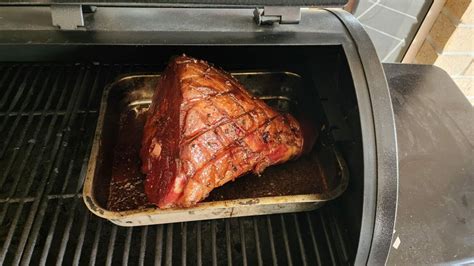Thawing a Ham: What Method is Best for You?
Thawing a ham safely and efficiently is crucial for ensuring a delicious and safe meal. Whether you're preparing a holiday feast or a casual weeknight dinner, understanding the best thawing methods for your situation is key. Improper thawing can lead to bacterial growth, potentially causing foodborne illness. This comprehensive guide will explore various thawing techniques, helping you choose the method that best suits your needs and timeline.
How Long Does it Take to Thaw a Ham?
The thawing time for a ham depends significantly on its weight and the thawing method employed. A general rule of thumb is to allow approximately 24 hours for every 5 pounds of ham when using the refrigerator thawing method. This is the safest method, ensuring consistent low temperatures that inhibit bacterial growth. Faster methods, like cold water thawing, significantly reduce this time but require careful monitoring.
What are the Different Methods for Thawing a Ham?
There are several safe and effective methods for thawing a ham:
1. Refrigerator Thawing:
This is the safest method, recommended by the USDA. Place the ham in its original wrapping on a plate or tray in the refrigerator. Allow ample time; it takes approximately 24 hours for every 5 pounds of ham. This slow thaw prevents the growth of harmful bacteria.
Pros: Safest method, ensures consistent low temperature. Cons: Requires significant planning ahead due to the long thawing time.
2. Cold Water Thawing:
This method is faster than refrigerator thawing. Submerge the ham (still in its original wrapping) in a large bowl or container filled with cold water. Change the water every 30 minutes to maintain a consistent cold temperature. This method thaws a ham roughly 30% faster than refrigerator thawing.
Pros: Faster than refrigerator thawing. Cons: Requires constant supervision to ensure the water remains cold and the ham is kept submerged.
3. Microwave Thawing:
Microwave thawing is the quickest method but also carries the greatest risk of uneven thawing and potential for cooking parts of the ham before others. If you choose this method, follow the manufacturer's instructions carefully, using the defrost setting and frequently checking the ham's temperature. This method is generally only recommended for small hams and should be followed immediately by cooking.
Pros: Fastest thawing method. Cons: Highest risk of uneven thawing and potential for localized cooking, increasing the chance of bacterial growth in the still-frozen parts.
Which Thawing Method is the Fastest?
Microwave thawing is the fastest method, but it's crucial to be cautious and follow instructions meticulously to avoid uneven cooking and bacterial growth. Cold water thawing is a faster alternative to refrigerator thawing, but still requires attention and consistent cold water.
Which Thawing Method is the Safest?
Refrigerator thawing is universally considered the safest method for thawing a ham. The consistently low temperature prevents the growth of harmful bacteria.
Can I Thaw a Ham at Room Temperature?
No. Thawing a ham at room temperature is extremely dangerous and should never be done. The "danger zone" temperature range (40°F - 140°F) allows bacteria to multiply rapidly, increasing the risk of foodborne illness.
What to Do After Thawing a Ham?
Once thawed, a ham can be cooked immediately or refrigerated for up to 2 days. Cooked ham can be refrigerated for up to 7 days. Always ensure the ham reaches a safe internal temperature of 145°F (63°C) during cooking.
By understanding the different thawing methods and their pros and cons, you can choose the one that best aligns with your schedule and safety preferences. Remember, prioritizing food safety is crucial, and refrigerator thawing remains the gold standard for ensuring a delicious and safe ham.

